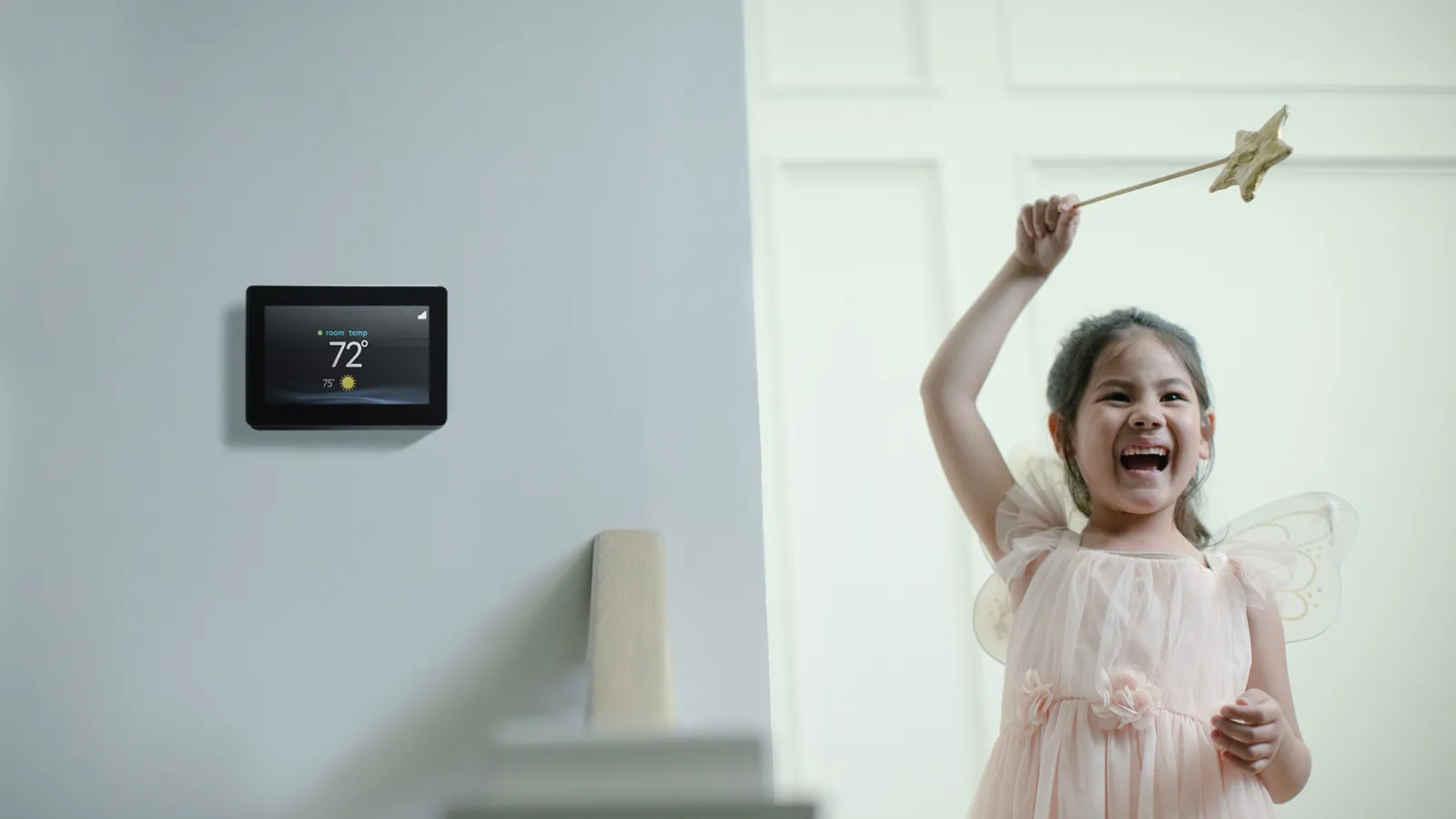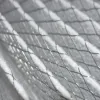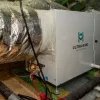Live in Atlanta long enough, and you’ll get used to the humidity. Sort of.
Acclimating to our humid conditions doesn’t mean you have to love them. It’s just something we grow to accept humidity will be high from late March through sometime in mid-October.
While we can’t do anything about the humidity outdoors, we do have the power to control it inside our homes. And control it as we should.
High indoor humidity causes problems beyond just making you sweat. Let’s look at the biggest ones, paying careful attention to health conditions that can be exacerbated by high levels of indoor moisture.
1. Mold and microbial growth
Microbes love warm, wet, and dark conditions. It’s why mushrooms spring out of wet soils and mold grows around the faucet inside your tub.
In humid conditions, mold spores thrive. They spread around, latch onto things, and grow. If you have allergies, you might notice microbial growth before you can see it. You’ll be sneezing and rubbing your eyes like crazy.
Needless to say, you don’t want your home to be a haven for microbes.
You want your living space to be cool and dry during the summer! That’s one reason air conditioners are our best friends when it comes to keeping our homes mostly mold-free. As long as the AC is doing its job, it should keep moisture to a level where it’s hard for mold to grow – below 55% relative humidity (RH), usually.
Unfortunately, many air conditioners fail to remove enough humidity. Sometimes, it’s because they’re oversized. Other times, it’s because the AC wasn’t set up to remove the right amount of moisture.
A properly sized air conditioner that’s set to the proper fan speed ought to maintain a comfortable humidity level in your home, at least during the months when it’s running.
Other times, you’ll have to take additional steps to remove humidity, but we’ll get to those in a sec.
2. Dust mites
These little critters can aggravate your allergies. They’re microscopic bugs that live inside dust clumps and eat the skin cells shed by people. Most often, they’re found in bedding, carpets, and upholstery. Gross, right?
Unsurprisingly, dust mites thrive in humid conditions. The greater the RH in your home, the more likely you are to have dust mites and, as a result, symptoms of allergies. The lower your RH, the less hospitable your bed sheets will be for dust mites.
As we already noted, your AC has a big role to play in keeping humidity levels low. But what about when your AC is oversized and simply can’t remove enough humidity? Besides replacing your AC, which you might not be ready to do yet, how can you address the problem?
One way is to add a whole-house dehumidifier to your home. The dehumidifier will kick on any time the humidity rises above a certain level. When you’re adding it in conjunction with an oversized AC, the dehumidifier will turn on to pick up the slack, so to speak. It will remove the additional moisture that the AC couldn’t handle.
The problem with oversized air conditioners is that they finish cooling your home too quickly. To get the moisture out of the air, an AC needs to run for a longer cycle. A dehumidifier isn’t an air conditioner, but it will make up for a big AC’s rapid on/off cycling.
Whole-house dehumidifiers are kind of tricky to install, so make sure you’re working with an experienced contractor.
3. Viruses
Wait a second. Don’t viruses thrive in drier conditions like the ones we experience in December and January when everyone has a cold?
Yes, they do. But they can also flourish in more humid conditions. A year ago, you might have raised an eyebrow at that claim, but the surge of COVID-19 cases in our area this summer has probably made it a lot easier to believe.
We’re not the only ones making it either. A classic paper entitled Indirect Health Effects of Relative Humidity in Indoor Environments contains an oft-cited chart wherein the prevalence of viruses in humid conditions is supported by rigorous scientific analysis (kudos to Energy Vanguard for cueing us into the source of this chart).
The chart shows how viruses start to hang around once humidity levels rise to 70% RH. Well, it’s not uncommon for Atlanta area homes to have humidity levels in this range – especially when they have an oversized AC, no supplemental dehumidification, and lots of air leaks.
Oh, and let’s not forget the shoulder seasons when the humidity is high but it’s too cool to run your AC. Indoor humidity can spike big time in March, April, October, and November.
In very humid conditions (as in very dry conditions), viruses are more likely to linger on surfaces or in the air. Curiously, they don’t like humidity levels around 50% RH, which is exactly where your air conditioner and/or dehumidifier should bring you.
4. Comfort
This one’s easy. Nobody likes feeling clammy inside their home.
75 degrees and 55% RH feels a whole lot more comfortable than 75 degrees and 75% RH! If your RH is in the 70% range, you might even be tempted to lower the temperature on your thermostat just so to make it feel like 75 degrees. Needless to say, you’ll end up paying more to cool your home when you do this.
Even if you aren’t worried about mold, dust mites, or viruses, you probably don’t like sweating on your sofa even though the AC is running. If for no reason other than comfort, keeping indoor humidity levels low is a good move.
Got an indoor humidity problem? Here’s what to do.
If you think you’ve got a humidity issue, you probably do. Go buy a digital humidity monitor and check your home’s RH. If it’s consistently above 60%, you should do something to fix the problem. Potential solutions include:
- Tuning your AC to remove more humidity
- Adding supplemental dehumidification
- Sealing air leaks (gaps and cracks between your home and the outdoors) that allow humid air to infiltrate your living space
- Replacing your air conditioner with a properly sized model that runs for longer cooling cycles
The takeaway is that you can reduce indoor humidity. You can feel more comfortable and breathe cleaner air inside your home.
If you’re struggling with indoor humidity in your Atlanta area home and are ready to solve the problem, PV Heating, Cooling & Plumbing can help. Get in touch today, and we’ll set up an appointment!






